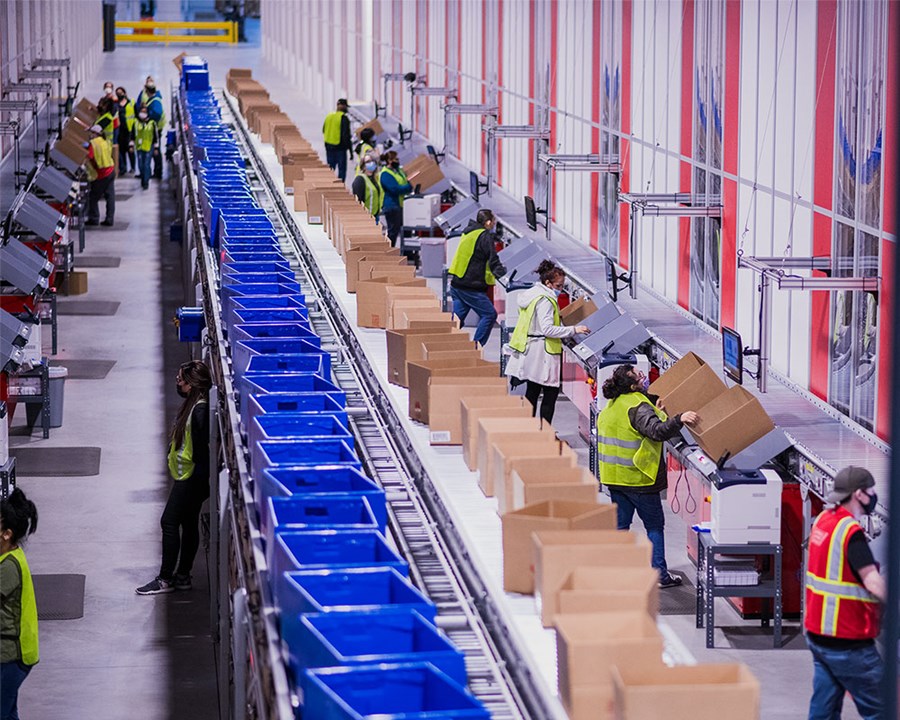
Black Friday, Cyber Monday: Last Minute Prep for Peak Season Operations
Matt Kuper | 24 November 2021
The holiday season is in full swing and shoppers have already started browsing and buying.
Despite current supply chain complexities, the National Retail Federation reports, “Consumers are spending just as much this year on gifts and other items to celebrate the spirit of the holidays.” Holiday sales are expected to reach between $843.4 billion and $859 billion in November and December, that’s an 8.5 and 10.5 percentage growth from last year. That does not include automobile, gas station or restaurant data.
Consumer demand remains strong when it comes to retail ecommerce. For warehouse and distribution center operations that means putting processes to the test. No matter how much automation is currently installed, handling seasonal peaks requires a smooth process that allows for operations to thrive – accurate orders, reliable fulfillment and scalable operations – during this hectic, bustling time.
As we gear up for 2022, experts at Adobe predict we will be facing the first ever trillion dollar year in ecommerce sales – it’s never too soon to prepare for an uptick in sales year-round.
4 Key Last-Minute Tips to Help Peak Season Operations
With peak season well underway, there are still crucial last-minute preparations that you can do to help ensure that your peak season operations are up to expectations and can navigate downtime threats. After all, downtime means delays, unfulfilled orders and unhappy customers.
- Routine Maintenance – Continue to keep up with your maintenance plan for any automation and machine equipment. During any possible downtime, double-check the routine, processes and, especially, equipment that may be operating more frequently due to the increased consumer demand.
- Parts – In the case that equipment requires a spare part, it’s a great idea to have spare parts ready to go and in hand. This will reduce any downtime and have you back up and running as soon as possible. The last thing you want is to face a long lead time or delay in shipping. Remember to also store your parts in an organized manner. This will help the maintenance team more quickly resolve problems, as well as assess restocking needs.
- Service Provider – Should any issues arise, it’s important to have your service provider’s contact information handy. Confirm availability, whether it’s remote or in-person access.
- Communicate – If you’re uncertain about equipment performance at higher rates or if you recently made adjustments that you want to confirm, connect with your system integrator. They’ll be happy to discuss possible mitigation or resolutions.
Continuous Improvement for Improved Automation Warehouse Operations
Seasonal peaks require efficiency and flexibility to thrive but, more importantly, it’s key to continue your maintenance, standard practices and know who to call when in need of help. Any automation you may have or may be considering should work to simplify peak season changes.
After all, peak season is not just Black Friday or Cyber Monday anymore. In fact, the National Retail Federation notes that the top consumer spending events occur several times throughout the year. Recent data shows the top five as: Back to College, winter holidays, Back to School, Mother’s Day and Easter.
BOPIS (buy online, pickup in store) is still growing at a rapid pace, along with buy now, pay later options and usage. Consumers will still be demanding in-stock, low priced, hassle-free experiences at a higher rate than ever before. Verticals and industries like home and garden or grocery, previously purchased in-person, have seen digital sales growth throughout 2020 and 2021. Many retailers are still implementing changes to meet demand, and the trillion-dollar demand of 2022, as reported by Adobe, is sure to make an impact.
As you navigate the current peak season, take the opportunity to track metrics like throughput, downtime, SKU parity, picking rates, replenishment rates and returns. In addition to day-to-day metrics, these metrics are helpful to find automation that is the right fit for your operations. Meaning that it should scale to your needs but provide a streamlined process that works for both scenarios.
If you’re ready to talk about your operation and explore potential solutions, talk to an expert today.
Matt Kuper, the VP of Global Sales and Applications at Bastian Solutions, has more than 15 years of experience in the material handling industry handling a variety of systems projects and technologies including high-speed sortation, pick modules, goods-to-person, and pallet handling systems. He joined Bastian Solutions in 2013 and has since overseen some of the company’s largest and most complex integration projects.
Comments
No comments have been posted to this Blog Post
Leave a Reply
Your email address will not be published.
Comment
Thank you for your comment.